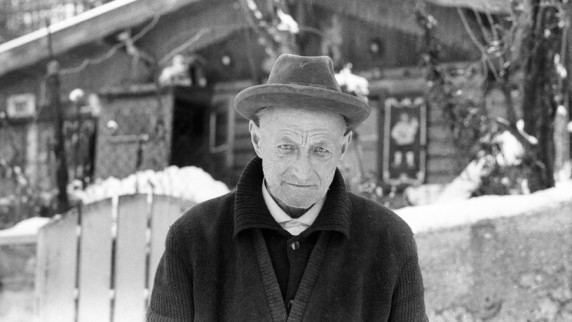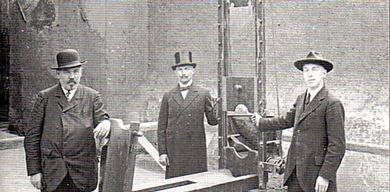Nationality German Name Johann Reichhart Religion Roman Catholic | Ethnicity German | |
 | ||
Died April 26, 1972, Dorfen, Germany | ||
Johann Reichhart (29 April 1893 – 26 April 1972) was a German executioner. He kept detailed records of his work, which amounted to 3,165 executions.

Life and career

Johann Reichhart was born in Wichenbach near Wörth an der Donau into a family of executioners and knackers going back eight generations to the mid-eighteenth century, which included his uncle Franz Xaver and his brother Michael. His career began in 1924 and spanned the time of the Weimar Republic and the Third Reich and ended with the Nuremberg Trials. Reichhart executed over 3,000 people, most of them during the period from 1939–1945 when, according to his own records, 2,876 were put to death. In the latter years, the executions were largely from heavy sentences handed down by the Volksgerichtshof (People's Court) for political crimes such as treason, including Sophie and Hans Scholl of the German resistance movement White Rose. Most of these sentences were carried out by Fallbeil (meaning "drop hatchet", also known as the Fallschwert, meaning "drop sword"), a shorter, largely metal re-designed German version of the French guillotine.

Despite the enormous workload he was asked to complete, Reichhart was very strict in his execution protocol, wearing the traditional German executioners' attire of black coat, white shirt and gloves, black bow-tie and top-hat. His work took him to many parts of occupied Europe including Poland and Austria. His request to the German government for permission to exceed the national speed limit while on his way to executions was denied.

He claimed during questioning that toward the end of the war, as the allied armies closed in, he disposed of his mobile Fallbeil in a river. However further study has indicated that there was no mobile Fallbeil in existence. This claim is possibly misinterpreted from when Reichhart transported the fallbeil's main components from prison to prison. Prior to the war each prison site had its own bench, and only the main frame and mechanical components were transported and erected prior to execution.

Following VE Day, Reichhart, who was a member of the Nazi Party, was arrested and imprisoned in Landsberg Prison for the purposes of denazification but not tried for carrying out his duty of judicial executioner. He was subsequently employed by the Occupation Authorities until the end of May 1946 to help execute 156 Nazi war criminals at Landsberg am Lech by hanging. He cooperated with Allied chief executioner master sergeant John C. Woods in the preparations for further executions of those found guilty and sentenced to death at the Nuremberg trials, but refused to carry out any further executions himself following two cases of mistaken identity.
Reichhart sought to reduce the time taken during an execution and to make the suffering of the condemned as short as possible. In view of this aim, he was instrumental in removing the tilting body board of the Fallbeil and relying on a fixed bench to which the condemned were physically restrained by two or three assistant executioners, thus removing the time-consuming act of buckling straps around the condemned's body. This shortened the elapsed time of the decapitation to only three or four seconds.
Reichhart's office made him a lonely and disliked person, even after abolition of the death penalty in West Germany in 1949. His marriage failed, and one of his sons, Hans, committed suicide in 1950 due to his association with his father's profession.
When, in 1963, there were public demands, during a series of taxi driver murders, for the re-introduction of the death penalty in West Germany, Reichhart spoke out against capital punishment.
Reichhart died in Dorfen near Erding in 1972.
